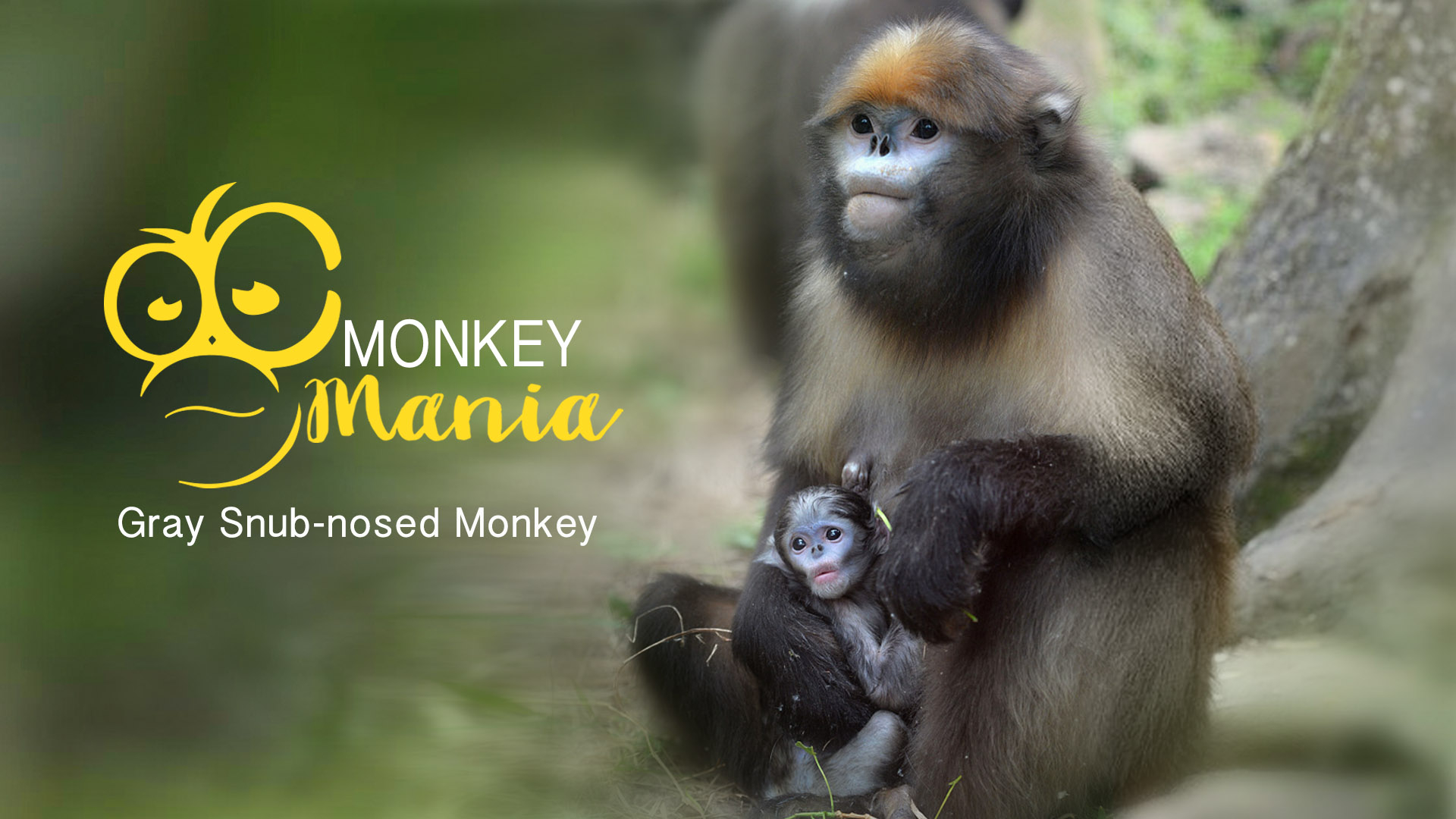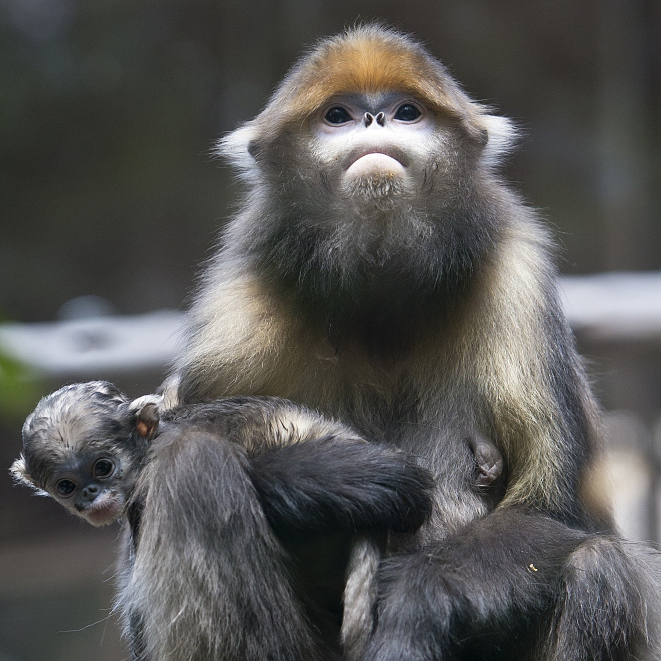
Animal
14:21, 08-May-2019
Monkey Mania: The gray snub-nosed monkey
By Li Yunqi
01:07

The fog pervades the beech forest of Mount Fanjing as some tender sprouts start to emerge in the chill air after the rain.
A long, harmonic call breaks the silence of the forest and is immediately followed by a dark gray flash mixed with shades of gold, leaving a long, thin tail dangling from a branch of the beech.
This is the gray snub-nosed monkey, one of the rarest monkeys on the planet.
The world's last 750 gray snub-nosed monkeys all live in the dense forests of Mount Fanjing.

She holds her newborn while it curiously looks around. /VCG Photo
She holds her newborn while it curiously looks around. /VCG Photo
In 1903, a British commissioner named Brelich accidentally acquired a bizarre yet beautiful pelt in southwest China's Guizhou Province. This pelt was nothing like what he had seen before. It was dark gray in the back and had a nice white line around the shoulder. But what was more surprising was the golden shades on the insides of the limbs. European scientists believed that this pelt belonged to a newly discovered species of monkey – the snub-nosed monkey – and named it after the commissioner.
However, it would not be until half a century later that scientists had living proof of the existence of this mysterious creature.
There are five species of snub-nosed monkeys in the world: the golden snub-nosed monkey, the Yunnan snub-nosed monkey, the gray snub-nosed monkey, the Tonkin snub-nosed monkey, and the Myanmar snub-nosed monkey. The first three species are native to China, and they all find their home in the mountainous regions of southwest China.
The gray snub-nosed monkey lives at a much lower altitude than the golden snub-nosed monkey and the Yunnan snub-nosed monkey. It dwells among the tall, shady beech trees and feeds on their tender leaves.

A baby monkey. /VCG Photo
A baby monkey. /VCG Photo
While many people believe that monkeys are herbivores, they also eat meat. Researchers have found them catching insects and butterflies, and they sometimes even hunt for birds and their eggs.
Gray snub-nosed monkeys breed around April and May because this is the best time for mothers to find their favorite food – tender leaves, which provide sufficient nutrients for the newborns.
CGTN Nature's documentary crew is currently filming at Mount Fanjing. The footage they have sent back gives us a glimpse of this amazing biodiversity hub. More stunning videos about the mountain are coming soon, so please follow our updates.
(Cover image designed by CGTN's Li Yueyun, and video provided by CGTN Nature's documentary crew)
(If you want to contribute and have specific expertise, please contact us at nature@cgtn.com.)

SITEMAP
Copyright © 2018 CGTN. Beijing ICP prepared NO.16065310-3
Copyright © 2018 CGTN. Beijing ICP prepared NO.16065310-3